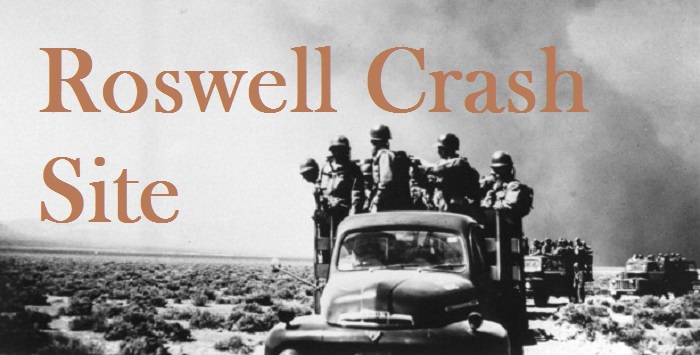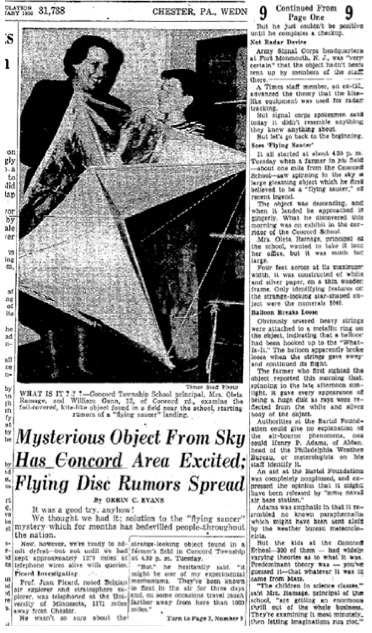.

The 1950 version of Roswell?
The story begins on March 28th, 1950 about 4:30 PM when a Concord, Pennsylvania farmer saw a bright shiny object descend onto his field. The farmer thought it might be a “flying disc” because of the way it appeared in the sky. Uncertain as to what it was, he gave the device to the principal of a nearby school. They had no idea what the device was and contacted the newspapers.
The newspaper began to ask about the device and, over the phone, described the object to several groups.1 The responses were:
1. The Army signal corps at Fort Monmouth was certain it was not theirs and the description did not fit anything they were familiar with.
2. Henry Adams, head of the Philadelphia weather bureau, could not identify the object and it resembled no known object used by meteorologists.
3. Professor Jean Picard was not sure but suggested it might be one of his experimental devices that he sent aloft.
4. An ex-soldier, who saw the object, suggested it was a radar tracking device.
The paper knew the object had been suspended by a balloon, it was four feet across, and was constructed of white and silver paper
on a wooden frame.
Comparisons
By now, you can surmise that what was found was a radar reflector of the ML-307 variety. This is exactly what was shown in the paper on the 29th (see below). By the 30th, once the visual image was released, many people quickly identified the object for what it was.
The30tharticlealsorevealedhowthedevicemadeittotheprincipal’soffice. AccordingtotheMarch30thedition,the“farmer”was an ex-navy commander by the name of Robert Ramage.2 Not surprisingly, the principal’s name was Oleta Ramage. They were prob- ably married or siblings. One has to wonder how a man , who rose to the rank of Commander in the navy, could be mistaken about something like this after seeing it. Wouldn’t he have been exposed to radar reflectors during his tours in the Navy? It appears that , like Jesse Marcel, rank and experience does not guarantee one the ability to identify everything that they find.
A more compelling question is why couldn’t the Army signal corps and Philadelphia weather bureau identify the target based on a verbal description? In the Roswell story, we see the same kind of confusion. The FBI telex stated that Wright field, based on tele- phone conversations, did not think it was a radar target. It was not until the target arrived at Fort Worth was the positive identification made. In this case, the reflector was intact and not fragmented, like the Roswell event, making it
easier to describe but it still could not be identified over the phone.

Is there a conspiracy angle here?
If I were a Roswell conspiracist, I would state that this was all staged to deflect attention away from the Guy Hottel memo or that this was part of the massive debunking effort to convince everyone that Roswell was still just a radar reflec- tor. If you can convince yourself this was the case, you can convince others as long as they are willing to believe it.
Lessons not learned?
The lesson learned is that, three years after Roswell, people still confused ra- dar reflectors for flying discs. The other lesson learned is that people have difficulty identifying such an object based on a verbal description. These fac- tors played a critical role in the Roswell story and one wonders why the crash- ologists attempt to ignore or downplay them.
Notes and references
1. Evans, Orrin C. “Mysterious object from sky has Concord area excited; Flying disc rumors spread”. Chester Times. Chester, Pennsylvannia. March 29, 1950. Page 1-2.
2. “Concord’s “flying disk” subject of much speculation.” Chester Times. Chester, Pennsylvania. March 30, 1950. Page 1-2.
Quelle: SUNlite 6/2013
4680 Views
